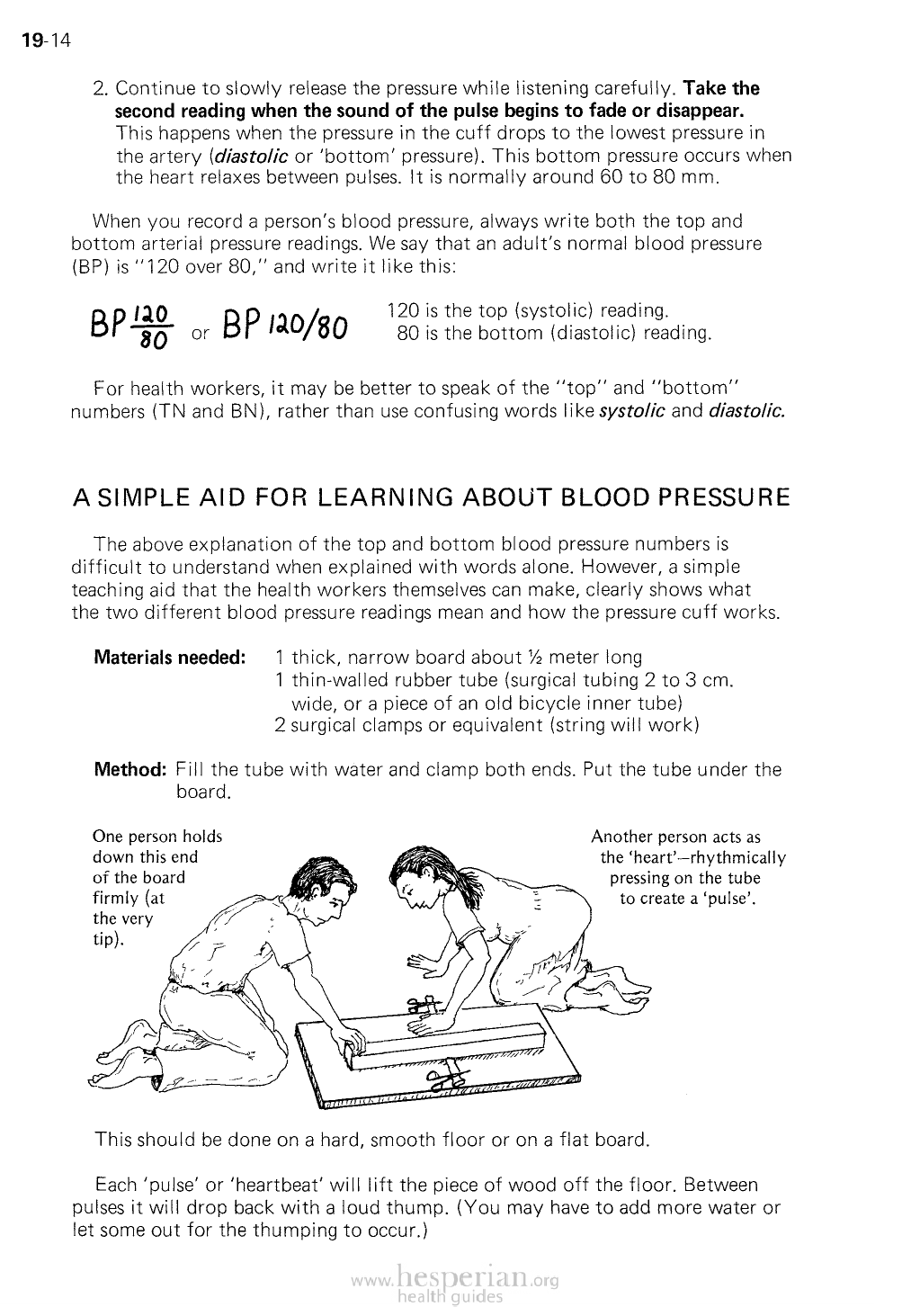
19-14
2. Continue to slowly release the pressure while listening carefully. Take the
second reading when the sound of the pulse begins to fade or disappear.
This happens when the pressure in the cuff drops to the lowest pressure in the
artery (diastolic or ‘bottom’ pressure). This bottom pressure occurs when the
heart relaxes between pulses, it is normally around 60 to 80 mm.
When you record a person’s blood pressure, always write both the top and
bottom arterial pressure readings. We say that an adult’s normal blood pressure
(BP) is “120 over 80,” and write it like this:
120 is the top (systolic) reading. 80
or is the bottom (diastolic) reading.
For health workers, it may be better to speak of the “top” and “bottom” numbers
(TN and BN), rather than use confusing words like systolic and diastolic.
ASIMPLE AID FOR LEARNING ABOUT BLOOD PRESSURE
The above explanation of the top and bottom blood pressure numbers is difficult
to understand when explained with words alone. However, a simple teaching aid
that the health workers themselves can make, clearly shows what the two different
blood pressure readings mean and how the pressure cuff works.
Materials needed: 1 thick, narrow board about % meter long
1 thin-walled rubber tube (surgical tubing
to 3 cm. wide, or a piece of an old bicycle inner tube)
2 surgical clamps or equivalent (string will work)
Method: Fill the tube with water and clamp both ends. Put the tube under the
board.
One person holds
down this end
of the board
firmly (at
the very
tip).
Another person acts as the
‘heart’—rhythmically
pressing on the tube to
create a ‘pulse’.
This should be done on a hard, smooth floor or on a flat board.
Each ‘pulse’ or ‘heartbeat’ will lift the piece of wood off the floor. Between pulses
it will drop back with a loud thump. (You may have to add more water or let some
out for the thumping to occur.)